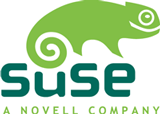Novell has announced a public preview release of Novell Linux Desktop 10. It is looking really good, that new 'Computer' menu (aka Start) they have introduced looks really slick and extremely functional. There is a tonne of good looking things in the upcoming NLD10 release, many of which are demonstrated in the some very good promotional videos from Novell.
What is even better is that larger software makers like Google and Skype are releasing their flagship software for Linux. On my OpenSUSE 10.1 test system I have easily installed Picasa, Google Earth and Skype and had them work first time without any issues. It is really good to see that the application offerings are beginning to be fleshed out from the basic OS/browser/productivity offerings.



